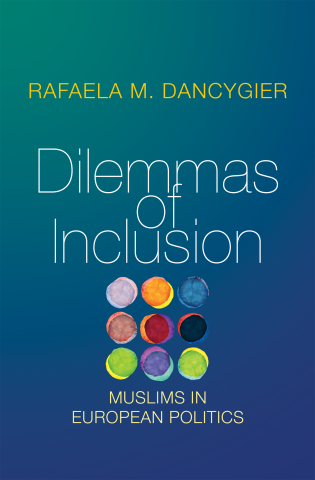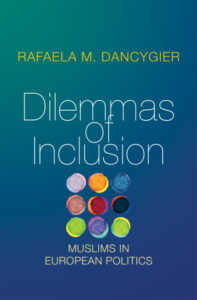
 Recognition of the immigrant-origin electorate, and especially of the Muslim electorate, has grown in Europe in recent years. Academic studies have highlighted the increasing descriptive representation of migrant-background politicians at the local and national level—and have asked why this increase has been uneven. Parties have engaged in a number of outreach activities to local communities, and they have done so even in the shadow of increasingly visible populist and nativist movements. Why would mainstream European parties risk a potential backlash in order to court the vote of minorities? A common argument has been that parties of the left and center-left have ideological commitments that bind them to more inclusive practices. But why do other parties also get involved, and why do the specific migrant-background candidates nominated often have views that conflict with their parties’ other ideological commitments?
Recognition of the immigrant-origin electorate, and especially of the Muslim electorate, has grown in Europe in recent years. Academic studies have highlighted the increasing descriptive representation of migrant-background politicians at the local and national level—and have asked why this increase has been uneven. Parties have engaged in a number of outreach activities to local communities, and they have done so even in the shadow of increasingly visible populist and nativist movements. Why would mainstream European parties risk a potential backlash in order to court the vote of minorities? A common argument has been that parties of the left and center-left have ideological commitments that bind them to more inclusive practices. But why do other parties also get involved, and why do the specific migrant-background candidates nominated often have views that conflict with their parties’ other ideological commitments?
While not entirely discounting the importance of ideology, Rafaela Dancygier’s Dilemmas of Inclusion asks political scientists to take the idea of vote-maximizing parties seriously once again. Parties in Europe, she argues, will reach out to Muslim and minority communities when—and only when—they perceive the potential for an electoral payoff. Dancygier provides extensive and convincing evidence for the idea that electoral incentives are the best explanation for cross-national and within-country variation in parties’ inclusion of Muslim minorities, both in who they nominate and how they promote their candidates.
The literature on minority representation has, so far, tended to look at descriptive representation as a question of numbers, which made sense at a time when few immigrants or children of immigrants entered politics in Europe. As parties developed a longer history of connecting with immigrant communities, and as citizenship regimes have liberalized in a number of countries, the pool of potential political candidates with a migration background increased considerably and became much more heterogeneous. This heterogeneity leads to an important question: What kind of representation are parties trying to provide when they choose specific candidates from migrant communities? Dancygier argues that inclusion actually manifests in two different ways. Parties may wish to symbolically include communities, signaling an interest in them but also indicating a fear of electoral backlash among core constituents. This results in the nomination of “safe” minority candidates who maintain an ideological congruence with the party’s platform and core voters.
At other times, parties may pursue a strategy of vote-based inclusion, where minority candidates are nominated on the basis of their perceived ability to mobilize votes from their community. Parties will still emphasize ideological agreements, but there will often be a number of issues where the most effective vote mobilizer is not the candidate who most aligns with traditional supporters’ views. Dancygier suggests that the conflict inherent in vote-based inclusion strategies is generalizable to all minority groups, but is at its most visible for parties of the left courting Muslim votes. An important aspect of Dancygier’s theory is the importance of spatial segregation and the existence of urban ethnic enclaves (the causes of which are beyond the book’s scope). There may be very large sections of European Muslim communities who do hold views in line with left parties’ norms of universalism and gender equality. However, she argues that the concentration of minorities from the same ethnic group in many cities has tended to reproduce traditional social structures in the electoral circumstances most conducive to electoral-based inclusion—that is, in the very places where the perceived benefit of successful minority mobilization outweighs the potential backlash among native voters. Parties may therefore have incentives to primarily nominate candidates with traditional views, regardless of how well these reflect the views of the group as a whole.
She then follows the logic of parties’ decisions about whom to nominate to new and somewhat counterintuitive conclusions, in a series of observations that will provide a rich source of further research questions. In Chapter 5, Dancygier explores the effect that an increasing reliance on vote-based inclusion has had in the UK. Although Labour was often the first to reach out to British Muslim communities, other parties have followed suit. Because the candidates most easily able to mobilize votes do not necessarily have an ideological affinity to Labour—or to any party specifically—and because of a tendency to emphasize cultural issues over class, party identity among candidates and voters becomes more fluid and allows more parties to compete on the same grounds. More importantly perhaps, party identity in the system overall starts to become uncoupled from class. The book unfortunately engages only briefly with the larger literature on class dealignment and values shifts among the broader electorate. But insofar as class matters less and less for minority outreach, Dancygier’s work suggests that independently from, or in addition to, other trends, the successful inclusion of minority and Muslim voters may be accelerating the decreasing salience of class for European parties. With that, it may also be adding to the increased volatility of voters from all backgrounds.
On top of this rich vein for further research on party competition, Dancygier explores in Chapter 6 the implications of parties’ vote-maximizing strategies for gender representation. She suggests that Muslim women running for office may signal a more egalitarian approach simply by virtue of their position as Muslim women publicly standing in the political arena. In contrast, they are less likely to be at the core of urban Muslim networks or in strong positions to mobilize voters from their own background. Parties seeking symbolic representation should be expected to nominate more Muslim women as candidates, while those attempting vote-based inclusion might be expected to nominate very few. Dancygier’s cross-national data as well as local data from Belgium indicate that this is so, suggesting that more successful political incorporation of Muslims may be leading to lower levels of women’s representation. If parties wish to increase the representation of both groups, they may have trouble doing so.
The book ends on a potentially optimistic note—that however real the tradeoffs for party systems and for gender representation are now, they depend on a divergence of preferences between native majorities and Muslim minorities (or minorities in general). If other processes of incorporation and integration cause these differences to disappear or to cease correlating with Muslim (minority) status, it may be easy for parties to return to or find a new ideological coherence and stability. However, two things in this book perhaps sow doubt about this outcome. First, Dancygier draws on studies showing that members of the majority group who live in minority enclaves tend to polarize in their views, and to acquire more egalitarian views on social issues, in contrast to their minority neighbors (or at least their neighbors’ representatives). She provides additional data from her cases that corroborates this finding, indicating that preferences may still be in the process of diverging further. Second, parties that are rewarded (in the short-term) for nominating candidates with more traditional views will likely do so as long as it pays off, and it is likely that acquiring political influence will strengthen, not weaken, the position of traditional networks. While other processes of incorporation may indeed be at play, they are hard to observe in this book. If preferences continue to diverge and polarize, it may be the case that a more pessimistic scenario mentioned comes to pass—that traditionally tolerant members of the majority may find themselves aligned with an electoral backlash, and parties may only cease to pursue short-term vote maximizing strategies when the losses to the nativist right become too great.
Reviewed by Colin Brown, Harvard University
Dilemmas of Inclusion: Muslims in European Politics
by Rafaela M. Dancygier
Publisher: Princeton University Press
Hardcover / 264 pages / 2017
ISBN: 9780691172590
To read more book reviews, please click here.
Published on July, 2 2018.




